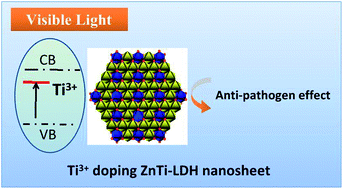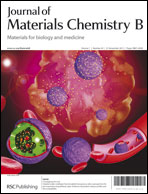Synthesis and antimicrobial activity of ZnTi–layered double hydroxide nanosheets†
Abstract
Narrow size dispersion ZnTi–layered double hydroxide (LDH) nanosheets with lateral dimensions in the range 40–80 nm have been synthesised using a reverse microemulsion method. Electron Spin Resonance (ESR) and X-ray photoelectron spectroscopy (XPS) measurements reveal that Ti3+ sites are generated within these nanosized LDH platelets. The data show that the concentration of Ti3+ cations in the nanoplatelets is size-dependent, the 40 nm nanoplatelets have a bandgap of ca. 2.3 eV. The combination of photochemcially activity and nanoparticle size results in materials that exhibit high antipathogen activity under visible light. The biocidal efficacies of the LDHs have been investigated under visible light. The ZnTi–LDHs display size-dependent cytotoxicity against S. cerevisiae, S. aureus and E. coli in culture. The 40 nm ZnTi–LDH nanoplatelets (ZnTi–LDH–RM1) are the most potent resulting in 95% cell death. These nanoplatelets are more active compared to a conventionally prepared ZnTi–LDH or the nanoparticulate metal oxides WO3 and TiO2 (P25). The nanosized ZnTi–LDHs severely inhibit the growth of S. cerevisiae, S. aureus and E. coli in culture.


 Please wait while we load your content...
Please wait while we load your content...